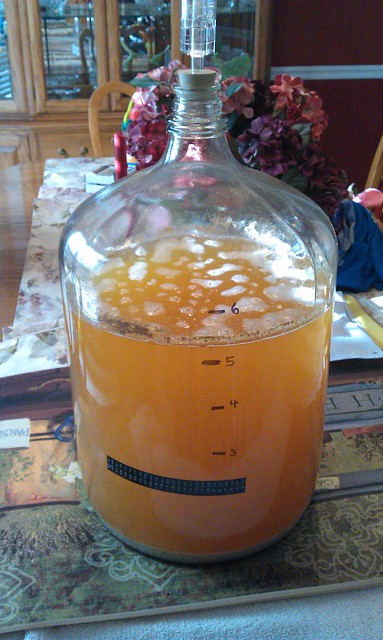haeffnkr
Well-Known Member
Hello,
How can I get more yeast attenuation out of my next brew?
My story -
My 3rd brew that I just checked FG last night was 1.011
It is the BM - Cream of 3 Crops recipe -
My OG came out at 1.047 (was expecting 1.045), so pretty close to my target for a 6 gallon batch.
I used -
6 - pale 2 row
2 - flaked corn
.5 - flaked rice
I mashed for 90 minutes, using BIAB. It was cold outside so I was shooting for 152 but it probably got down to 147 then I gave it heat and brought it back up at around the 45 minute mark. By 90 minutes it was close to 147 again, I gave it more heat. I ran the temp up to 170 and pulled the bag out and kept it going until the boiling started.
Boiled hard for 90 minutes.
I started with 8.75 gallons of water, biab grains took 3/4, I boiled about 8 down to 6 and cooled it very quickly.
I used Nottingham yeast - aerated well.
first few days it was 59-60 degrees after day5 it was brought up to 65 - then by day 7 I took it upstairs at 71-72 for a 9 days. Then I took it back down stairs where it was 68-ish for anothe 5 days or so.
It started to get really at clear at day 19 or so - now 21 days old
Checked the FG at 1.011 last night.
Now cold crashing.
1.047 - 1.011 = 4.7 abv... which is not bad.
I wish I could have gotten a few more points out of this.
Any suggestions or did I get all I could get out of this?
(it does taste awesome out of the hydro sample...)
thanks Kevin

How can I get more yeast attenuation out of my next brew?
My story -
My 3rd brew that I just checked FG last night was 1.011
It is the BM - Cream of 3 Crops recipe -
My OG came out at 1.047 (was expecting 1.045), so pretty close to my target for a 6 gallon batch.
I used -
6 - pale 2 row
2 - flaked corn
.5 - flaked rice
I mashed for 90 minutes, using BIAB. It was cold outside so I was shooting for 152 but it probably got down to 147 then I gave it heat and brought it back up at around the 45 minute mark. By 90 minutes it was close to 147 again, I gave it more heat. I ran the temp up to 170 and pulled the bag out and kept it going until the boiling started.
Boiled hard for 90 minutes.
I started with 8.75 gallons of water, biab grains took 3/4, I boiled about 8 down to 6 and cooled it very quickly.
I used Nottingham yeast - aerated well.
first few days it was 59-60 degrees after day5 it was brought up to 65 - then by day 7 I took it upstairs at 71-72 for a 9 days. Then I took it back down stairs where it was 68-ish for anothe 5 days or so.
It started to get really at clear at day 19 or so - now 21 days old
Checked the FG at 1.011 last night.
Now cold crashing.
1.047 - 1.011 = 4.7 abv... which is not bad.
I wish I could have gotten a few more points out of this.
Any suggestions or did I get all I could get out of this?
(it does taste awesome out of the hydro sample...)
thanks Kevin



